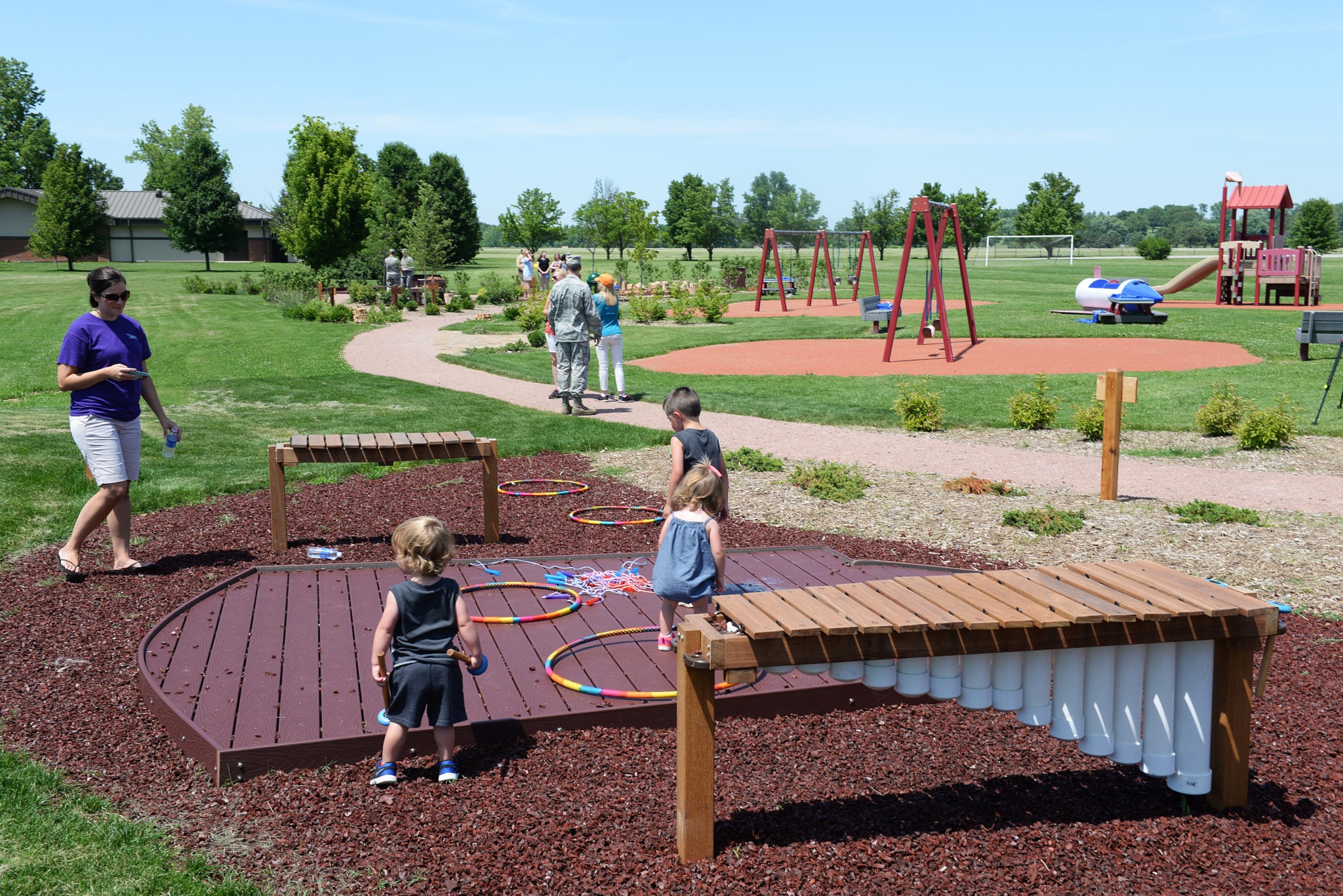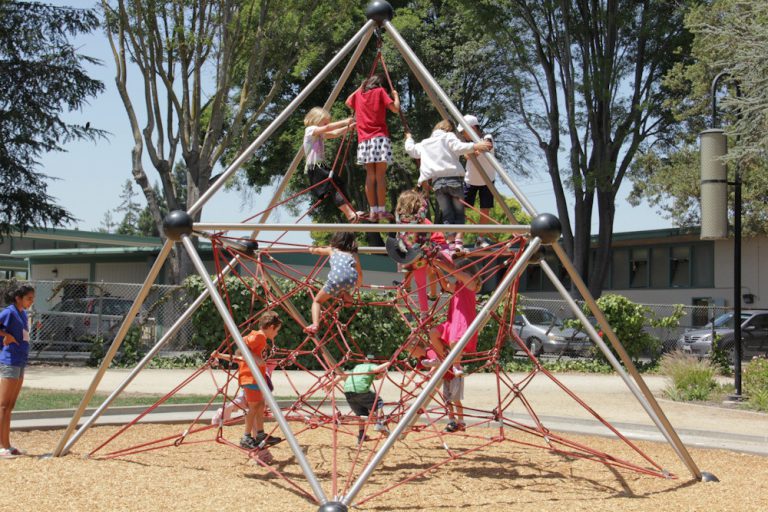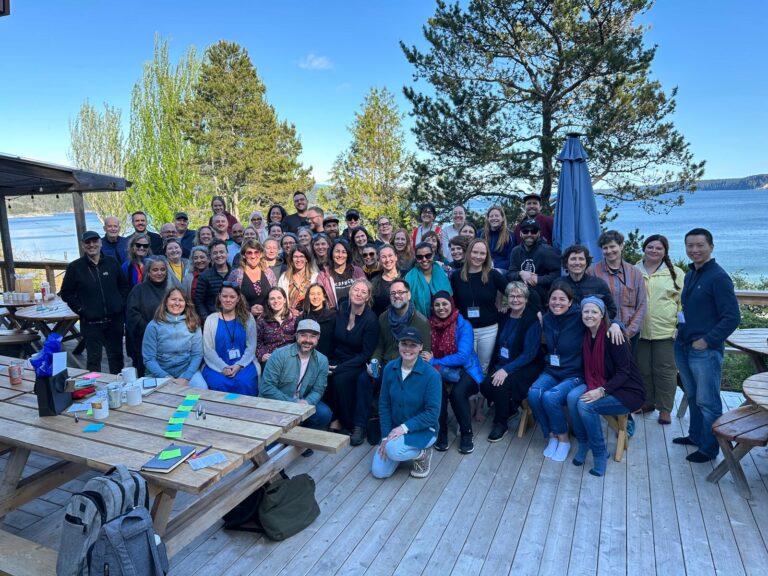
3 March 2019
Transforming playgrounds into places of possibility
Photo credit: U.S. Air Force photo/Senior Airman Joshua Eikren
There’s something about the end of winter that makes us squirrelly. With warmer days just around the corner, we’re all itching to get outside and play.
For most of us, daydreaming of warmer days doesn’t include a scenario where we are literally playing somewhere. Instead, we are imagining walks or hikes with friends, bike rides, or bringing our gardens back to life.
But what if we imagine play in its most basic and nostalgic sense? Yes, I’m talking about play in a playground.
Imagine the last playground you visited – how inspired were you? Were you curious to test out the slide or to climb into the treehouse? My guess is that you weren’t inspired at all. You were probably sitting or standing back, supervising your child, your niece, or your neighbour’s kid. I’d even wager a guess that the little ones you were with weren’t feeling very inspired themselves.
What if I told you some of the best playgrounds out there have been designed to inspire interactions between people of all ages? How about that the playgrounds of tomorrow will promote social values such as empathy, collaboration, and inclusion?
More inclusive, more cooperative, more fun
Purposefully designed playgrounds can help children develop important social skills and even have the potential to play a central role in the development of socially conscious adults.
If playgrounds are well designed – in ways that promote inclusion and interaction – every one of every age should feel inspired to use them.
We can imagine playgrounds as spaces that inspire genuine, meaningful interactions between people; that host possibilities for imaginative, inclusive, and intergenerational play; and that teach people important social values.
The structures in playgrounds can be designed in ways that encourage people to cooperate, learn new skills, solve problems, and feel challenged. Imagine a merry-go-round that requires two or more people to cooperate for it to function, or creative elements like hop-scotch courts, that encourage children to invent games together.

What if a playground incorporated tools for building, cutting, and creating like at New York’s Adventure Playground? Or included various sensory elements like sounds, patterns, and textures to support children with autism?
Play structures that build social values invite their users to imagine infinite possibilities for play.
While some of the features I’ve described sound like they belong to playgrounds of the good old days, there are also exciting ideas that point toward an age of playgrounds that is only starting to develop now. Age-old structures can be re-imagined with technology. For example, the NEOS playground uses blinking lights, buttons, beepers and timers to create scenarios in which participants can run, jump, and work together to chase down lights as they bounces from panel to panel. Interactive features like these promote collaboration and teamwork.
Why Should We Prioritize Better Playgrounds?
- Busy playgrounds are better playgrounds. Studies show that interesting playgrounds attract more users. Playgrounds that have been built with interesting, even challenging or ‘risky’ design elements – for example in London, UK – have 55% more visitors than comparable (but less interesting) playgrounds in San Francisco, Los Angeles, and New York.
- Play is important to childhood development. There is significant research highlighting the benefits of play. We know that children need to be exposed to incremental risks such as climbing, balancing or jumping. These challenges help them learn to better assess risks so they build agility and balance and can make better decisions when the consequences are potentially greater. Children who learn fundamentals of movement at a young age are better equipped to learn how to play sports and stay active.
- We need to move. According to the latest reports, just 15% of children and youth in Canada meet all three recommendations within the Canadian 24-Hour Movement Guidelines for Children and Youth. Lack of movement is associated with negative health outcomes such as obesity, diabetes, and low bone density (osteoporosis). What better way to promote movement than through play and collaboration? Better designed playgrounds are one step in the right direction.
In the coming months, Urban Matters CCC will dive into evidence-based studies to explore how design can promote the kind of play and interactions that benefit children’s physical, socio-emotional, and mental development. From there, we will be translating these findings into prototypes for playground designs that build social values. Stay tuned!
Author: Erin Welk
Social and Economic Inclusion
Urban Matters CCC




